mybatis的生命周期
工作了这些年,每次看到书籍、文档以及他人嘴上说到软件工程的生命周期,我是不赞成的,之前在高中读书的时候,生物课上讲到生命是与蛋白质相关的,然而软件跟蛋白质没有关系,就是一些数据在计算机中创建和销毁,用运行周期来形容更好一些,但是用生命来形容就有点不可理解了。
以一个简单的maven项目来描述这个事情
https://mybatis.org/mybatis-3/zh_CN/getting-started.html
按照官网的讲解,使用mybatis需要做如下几步
项目配置
pom.xml
<?xml version="1.0" encoding="UTF-8"?>
<project xmlns="http://maven.apache.org/POM/4.0.0"
xmlns:xsi="http://www.w3.org/2001/XMLSchema-instance"
xsi:schemaLocation="http://maven.apache.org/POM/4.0.0 http://maven.apache.org/xsd/maven-4.0.0.xsd">
<modelVersion>4.0.0</modelVersion>
<groupId>org.example</groupId>
<artifactId>mybatis-maven</artifactId>
<version>1.0.0</version>
<properties>
<maven.compiler.source>8</maven.compiler.source>
<maven.compiler.target>8</maven.compiler.target>
<project.build.sourceEncoding>UTF-8</project.build.sourceEncoding>
</properties>
<dependencies>
<dependency>
<groupId>com.mysql</groupId>
<artifactId>mysql-connector-j</artifactId>
<version>8.0.33</version>
</dependency>
<dependency>
<groupId>org.mybatis</groupId>
<artifactId>mybatis</artifactId>
<version>3.3.0</version>
</dependency>
<dependency>
<groupId>log4j</groupId>
<artifactId>log4j</artifactId>
<version>1.2.17</version>
</dependency>
</dependencies>
<build>
<resources>
<!-- 扫描 src/main/java 下的配置文件 -->
<resource>
<directory>src/main/java</directory>
<includes>
<include>**/*.xml</include>
<include>**/application*.yml</include>
<include>**/application*.yaml</include>
<include>**/application*.properties</include>
</includes>
</resource>
</resources>
</build>
</project>mybatis-config.xml
<?xml version="1.0" encoding="UTF-8" ?>
<!DOCTYPE configuration
PUBLIC "-//mybatis.org//DTD Config 3.0//EN"
"https://mybatis.org/dtd/mybatis-3-config.dtd">
<configuration>
<!-- 配置文件上下文使用的属性值引用外部文件 -->
<properties resource="jdbc.properties"></properties>
<settings>
<setting name="mapUnderscoreToCamelCase" value="true"/>
</settings>
<!-- 定义别名,在 mapper 的返回类型中使用 -->
<typeAliases>
<typeAlias type="cn.hahaou.mybatis.cache.levelone.entity.Role" alias="role"/>
</typeAliases>
<!-- 定义数据库信息,默认使用 development 数据库构建环境 -->
<environments default="test">
<environment id="test">
<!-- 采用 jdbc 事务管理 -->
<transactionManager type="JDBC"/>
<!-- 配置数据库连接信息 -->
<dataSource type="POOLED">
<property name="driver" value="${driver}"/>
<property name="url" value="${url}"/>
<property name="username" value="${username}"/>
<property name="password" value="${password}"/>
</dataSource>
</environment>
</environments>
<!-- 定义映射器 -->
<mappers>
<mapper class="cn.hahaou.mybatis.cache.levelone.mapper.LevelOneRoleMapper"/>
</mappers>
</configuration>进行一些基础配置,例如数据库、环境、mapper 。
加载配置信息
InputStream inputStream = Resources.getResourceAsStream("mybatis-config.xml");通过 mybatis 自带的文件加载方式转换为?InputStream。
创建?SqlSessionFactory
SqlSessionFactory sqlSessionFactory = new SqlSessionFactoryBuilder().build(inputStream);SqlSessionFactory 是一个接口,最终使用?SqlSessionFactoryBuilder 通过工厂模式来创建?SqlSessionFactory 的实现类 DefaultSqlSessionFactory。
在整个应用中只需要创建一个,可以使用单例模式来实现。

在第二步中完成了一个很重要的事情,将配置文件解析为?mybatis 可用的配置,最终解析的对象为?Configuration,这个很重要,贯穿了 mybatis 的始终。一些运行过程中需要的信息在这里可以获取到。
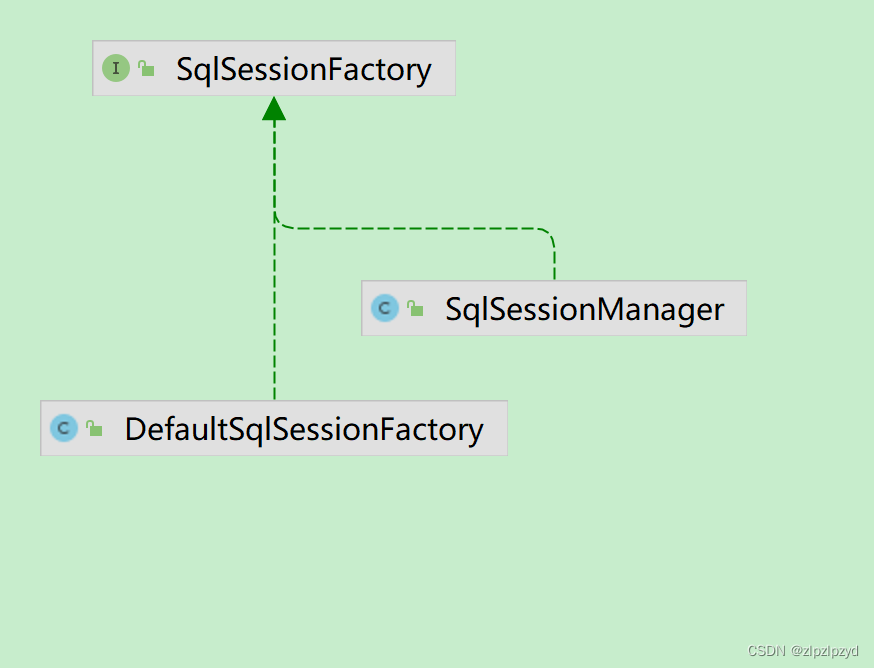
创建?SqlSession 对象
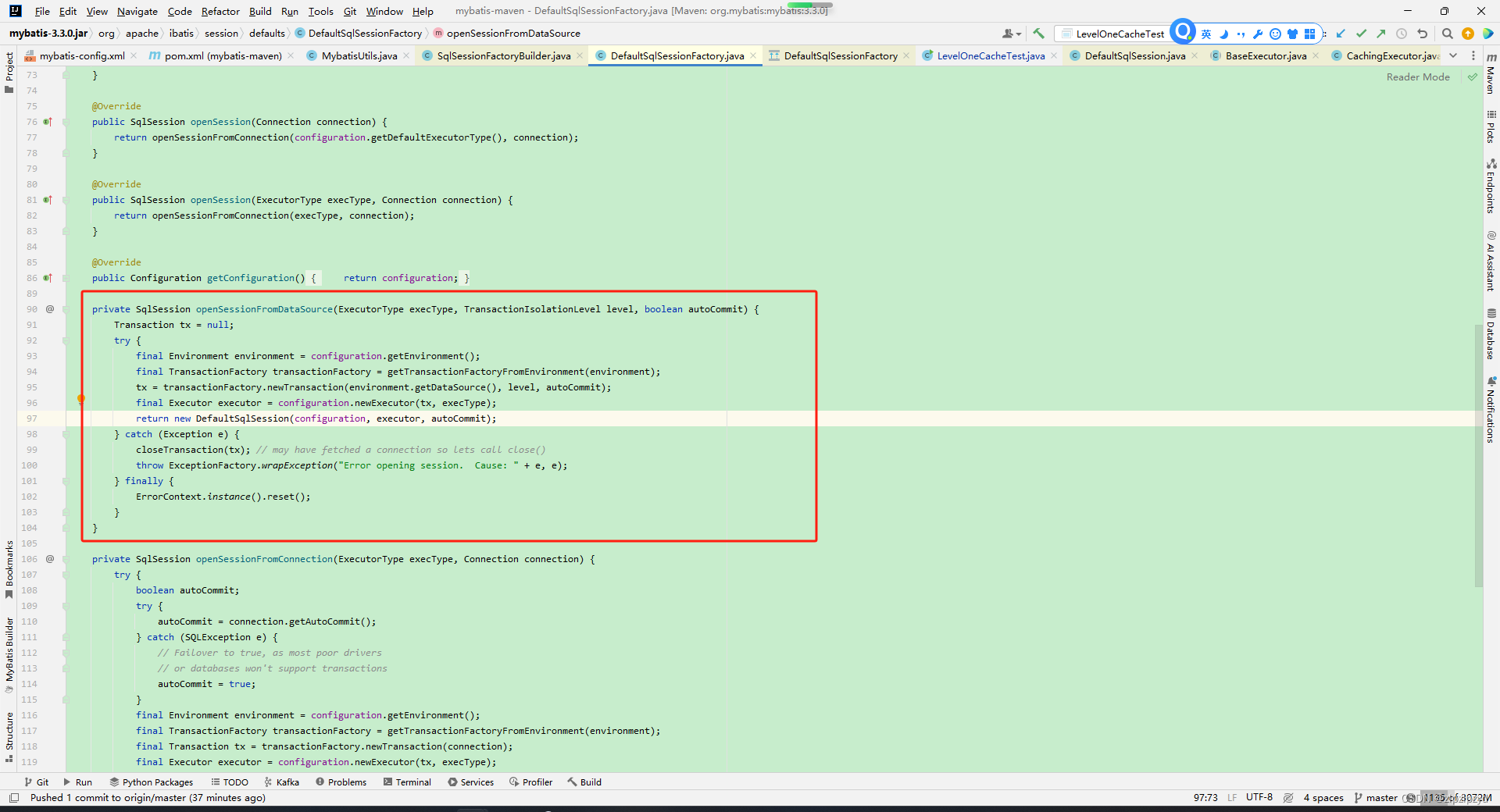
鉴于?SqlSession 是一个接口,继承了?Closeable,在使用结束后需要将其关闭。
SqlSession? 是线程级别的,非线程安全。
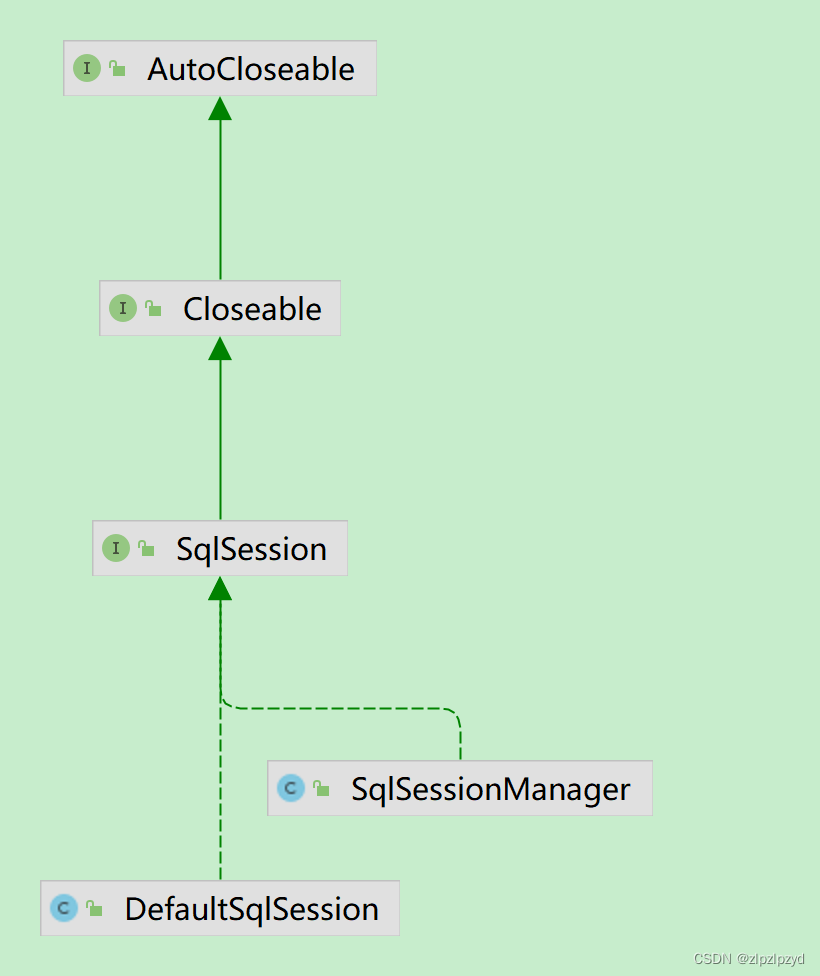
封装的工具类如下
package cn.hahaou.util;
import org.apache.ibatis.io.Resources;
import org.apache.ibatis.session.SqlSession;
import org.apache.ibatis.session.SqlSessionFactory;
import org.apache.ibatis.session.SqlSessionFactoryBuilder;
import java.io.IOException;
import java.io.InputStream;
public class MybatisUtils {
public static SqlSessionFactory sqlSessionFactory = null;
public static String resource = "mybatis-config.xml";
static {
try (InputStream inputStream = Resources.getResourceAsStream(resource);){
sqlSessionFactory = new SqlSessionFactoryBuilder().build(inputStream);
} catch (IOException e) {
}
}
public static SqlSession openSession() {
SqlSession sqlSession = sqlSessionFactory.openSession();
return sqlSession;
}
}
SqlSessionFactory 单例模式,全局共享,SqlSession 使用的话需要每次创建。
获取 Mapper 实例
LevelOneRoleMapper roleMapper = sqlSession.getMapper(LevelOneRoleMapper.class);通过?SqlSession 获取创建的 Mapepr 实例,返回的是一个类型为 MapperProxy 的动态代理类。
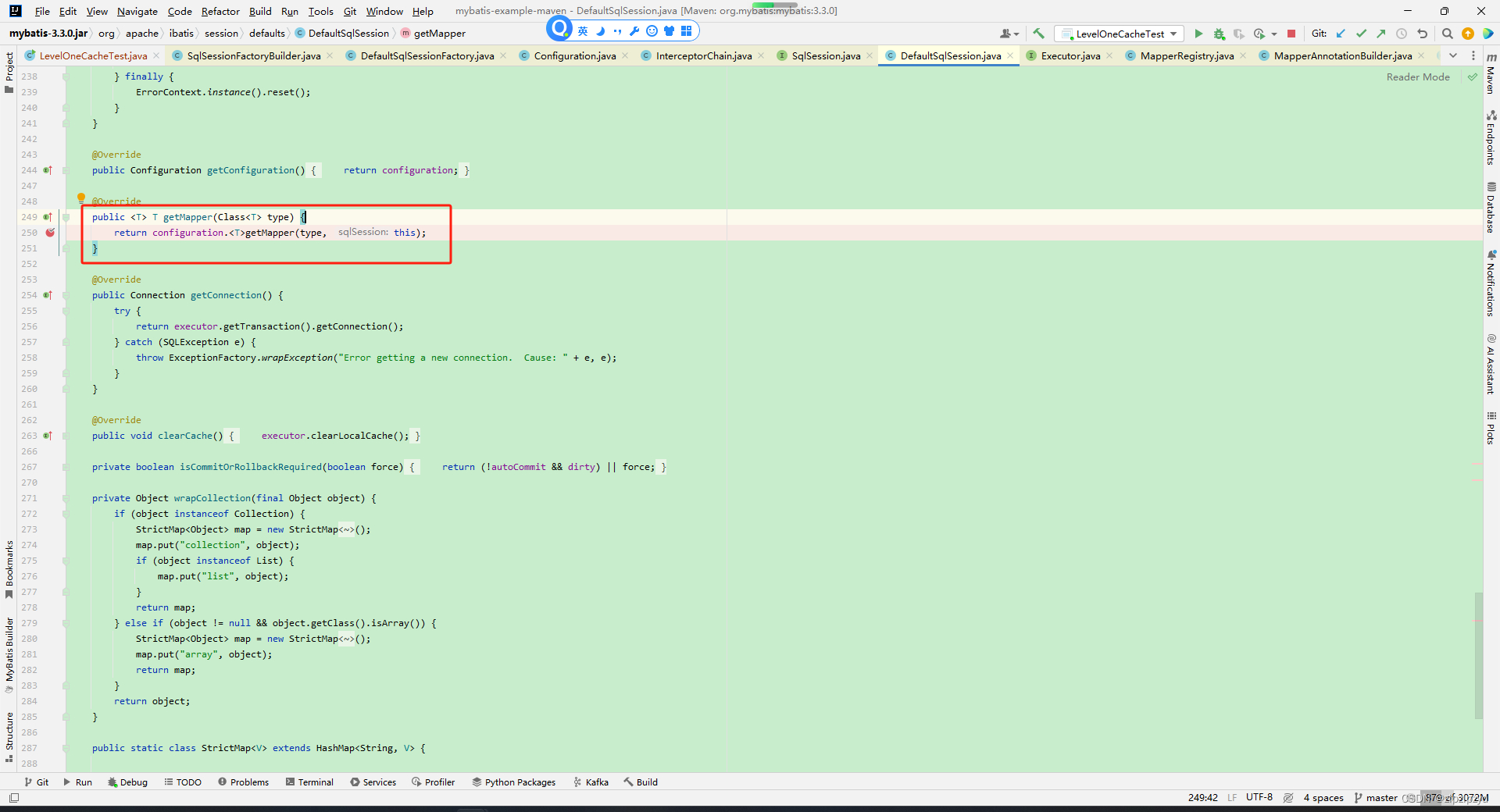

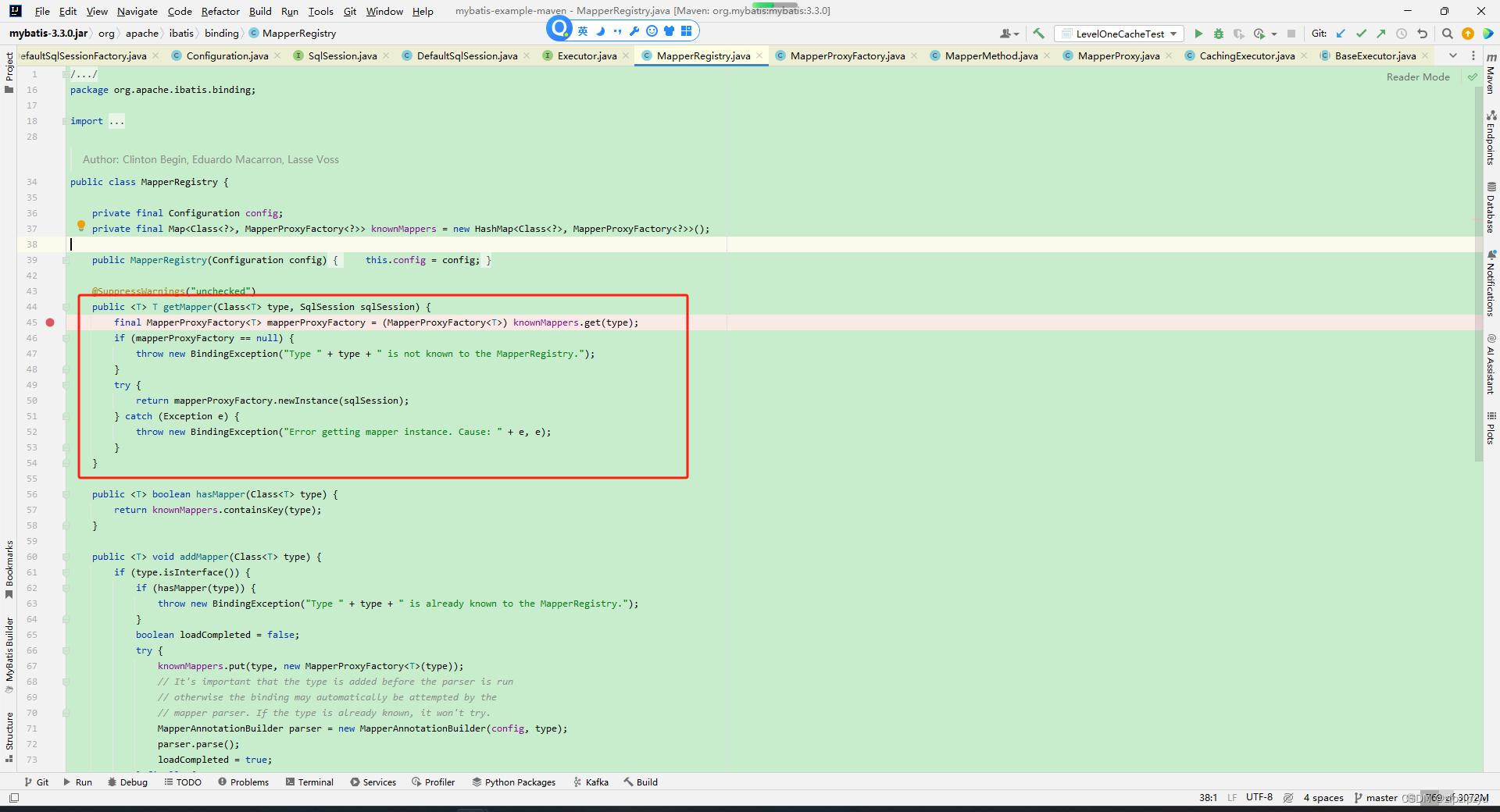
在 MapperProxyFactory 中通过工厂模式创建 MapperProxy 对象,里面包含了 DefaultSqlSession、Mapper 接口类、Method 和 MapperMethod 的 map 映射关系。
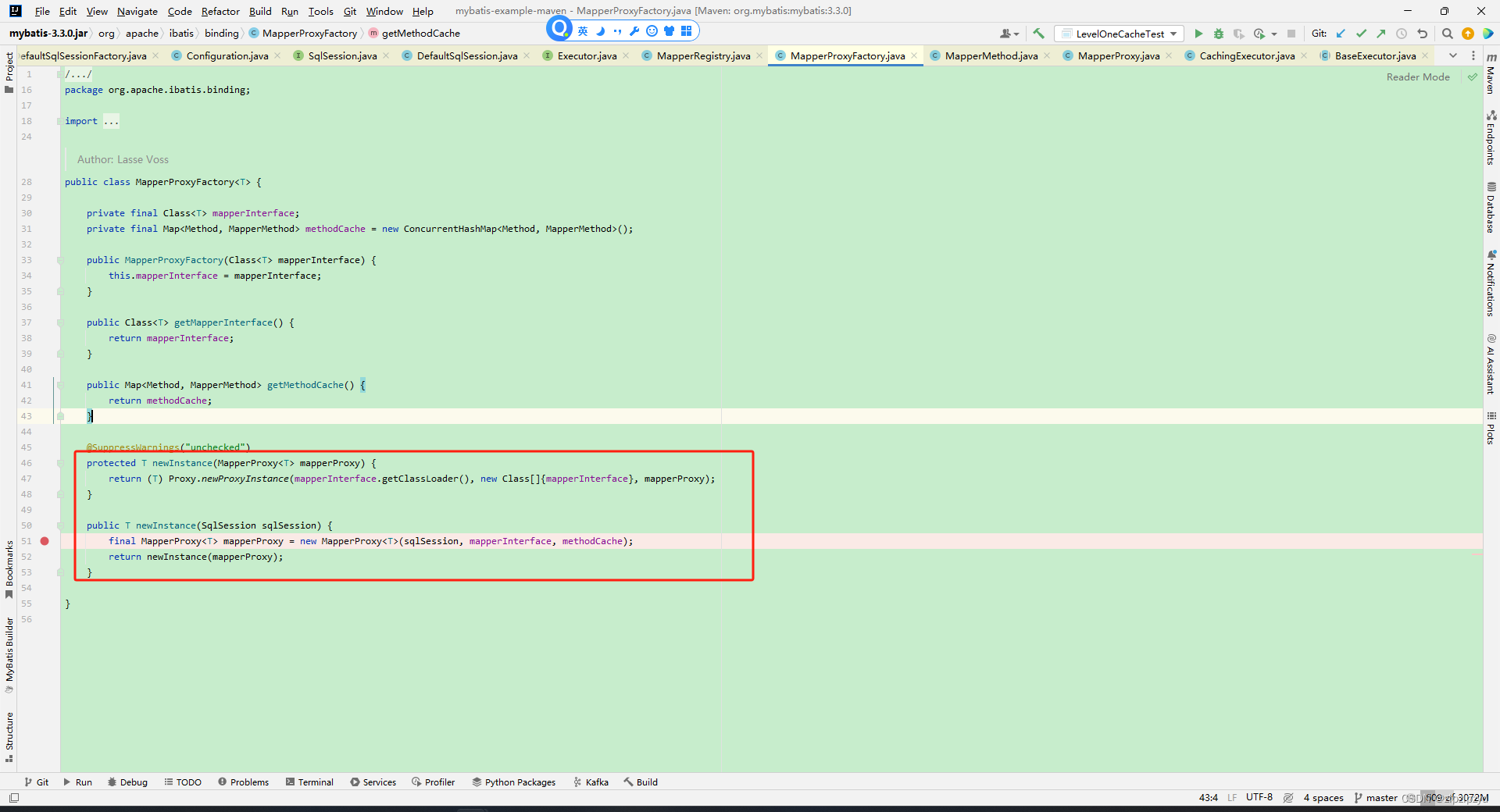

最终在调用对应的方法时通过反射来执行具体的操作。
整理的时序图如下
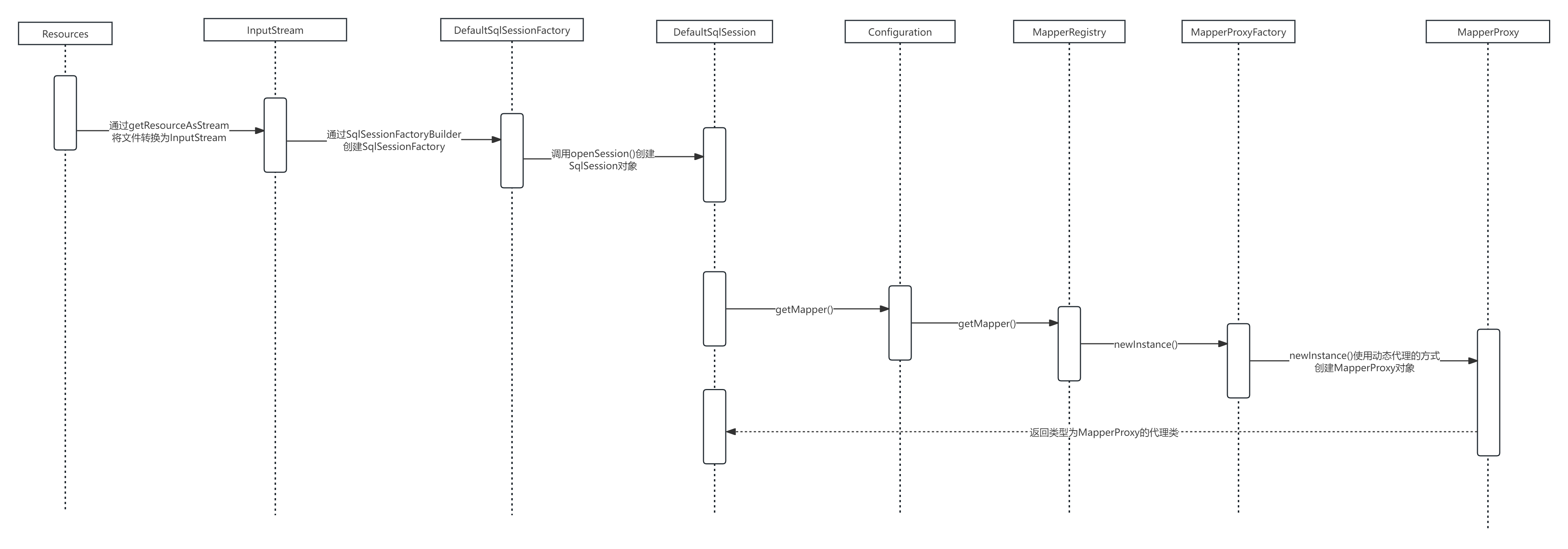
至此,整个步骤就完成了,接下来就是具体的业务操作了。
本文来自互联网用户投稿,该文观点仅代表作者本人,不代表本站立场。本站仅提供信息存储空间服务,不拥有所有权,不承担相关法律责任。 如若内容造成侵权/违法违规/事实不符,请联系我的编程经验分享网邮箱:chenni525@qq.com进行投诉反馈,一经查实,立即删除!